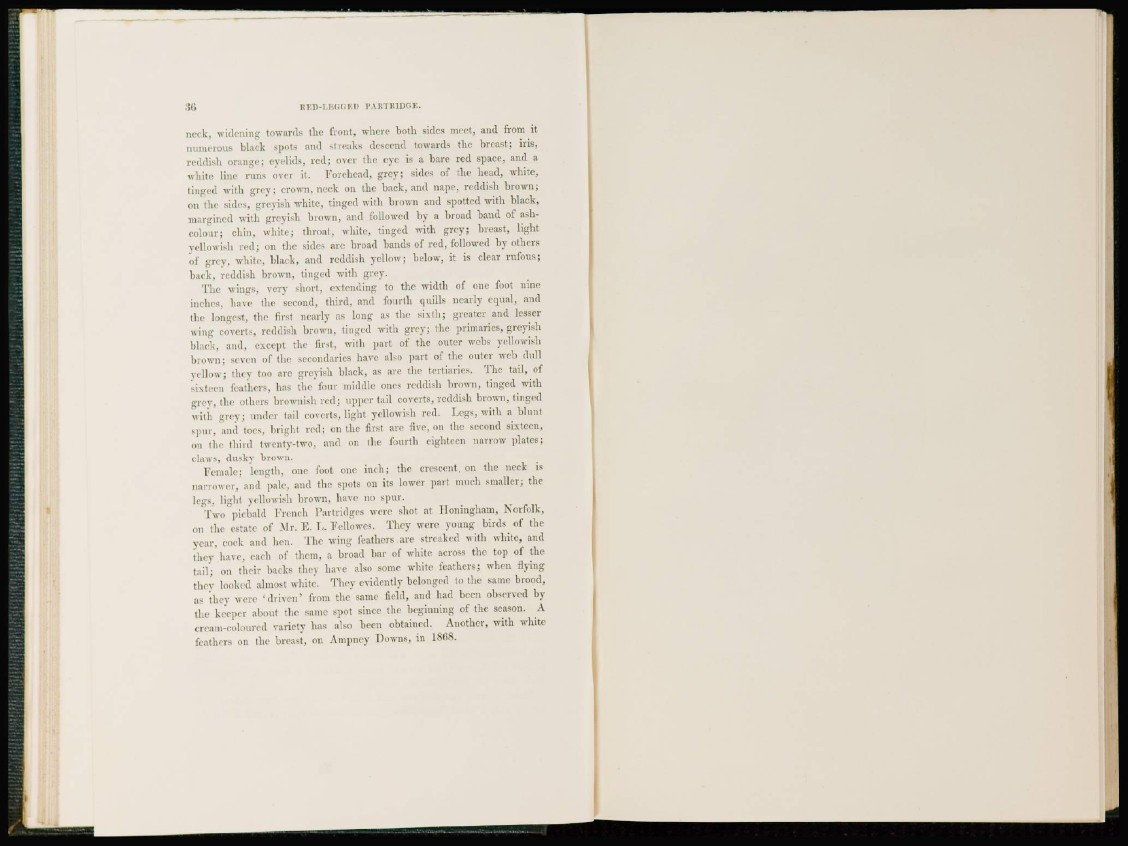
36 RED-DEGGED PARTRIDGE.
neck, widening towards llie front, where both sides meet, and from it
numerous black spots and streaks descend towards the breast; iris,
reddish orange; eyelids, r e d ; over the eye is a bare red space, and a
white line runs over it. Forehead, grey; sides nf the head, white,
tinged with grey; crown, neck on the back, and nape, reddish brown;
on the sides, greyish white, tinged with brown and spotted with black,
margined with greyish brown, and followed by a broad band of ashcolour;
chin, white; throat, white, tinged with grey; breast, light
yellowish red; on the sides are broad bands of red, followed by others
of grey, white, black, and reddish yellow; below, it is clear rufous;
back, reddish brown, tinged with grey.
The wings, very short, extending to the width of one foot nine
inches, have the second, third, and fourth quills nearly equal, and
the longest, the first nearly as long as the sixth; greater and Lesser
wing coverts, reddish brown, tinged with grey; the primaries, greyish
black. and. except the first, with part of the outer weba yellowish
brown; seven of the secondaries have also part of the outer web dull
yellow; they too are greyish black, as arc the tertiaries. The tail, of
sixteen feathers, has the four middle ones reddish brown, tinged with
grey, the others brownish red; upper tail coverts, reddish brown, tinged
with grey; under tail coverts, light yellowish red. Legs, with a blunt
spur, and toes, bright red; on the first are five, on the second sixteen,
on the third twenty-two, and on the fourth eighteen narrow plates;
claws, dusky brown.
Female; length, one foot one inch; the crescent, on the neck is
narrower, and pale, and the spots on its lower part much smaller; the
legs, light yellowish brown, have no spur.
Two piebald French Partridges were shot at Honingham, Norfolk,
on the estate of Mr. E. L. Fellowes. They were young birds of the
year, cock and hen. The wing feathers are streaked with white, and
they have, each of them, a broad bar of white across the top of the
t a i l ; on their backs they have also some white feathers; when flying
they looked almost white. They evidently belonged to the same brood,
as they were ' d r i v e n ' from the same field, and had been observed by
t h e keeper about the same spot since the beginning of the season. A
cream-coloured variety has also been obtained. Another, with white
feathers on the breast, on Ampney Downs, in 18(58.